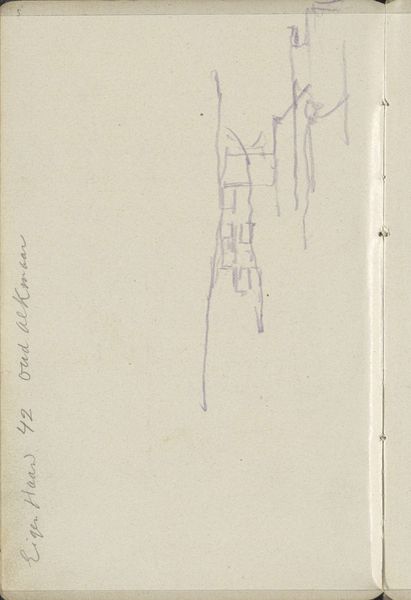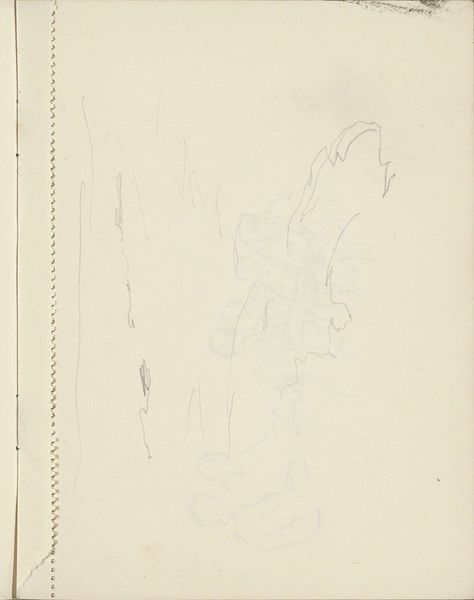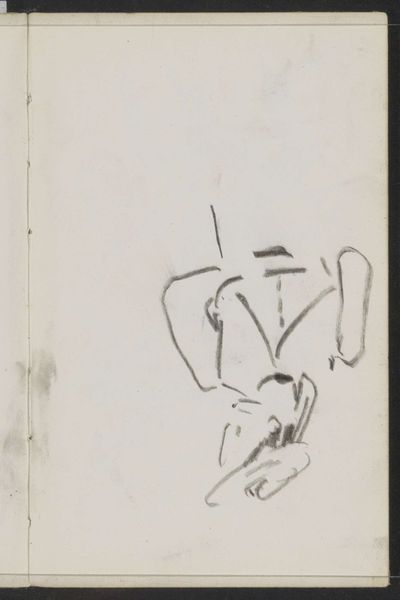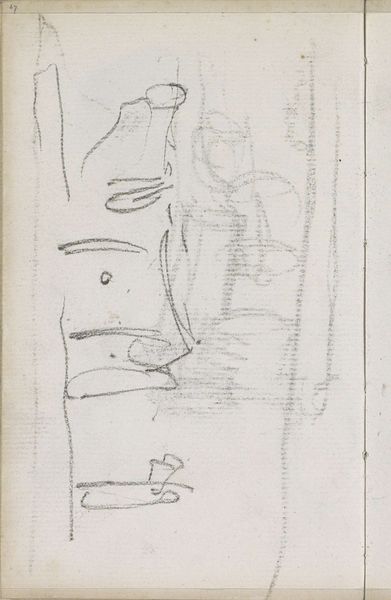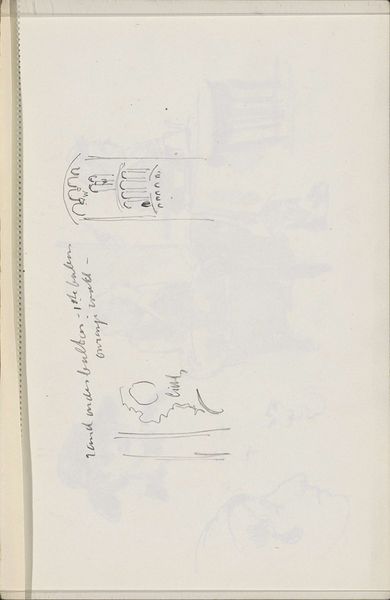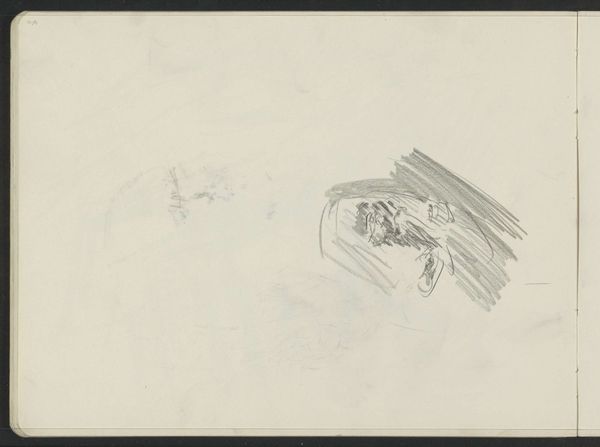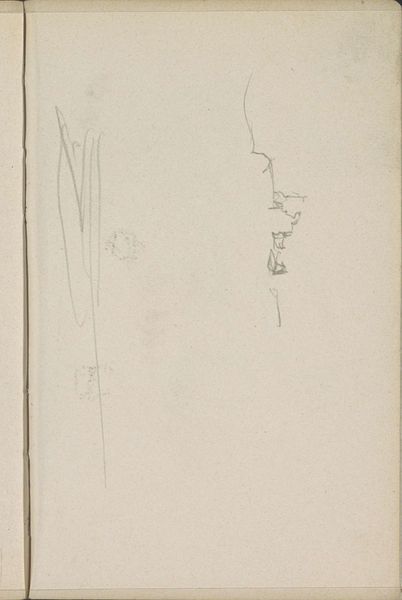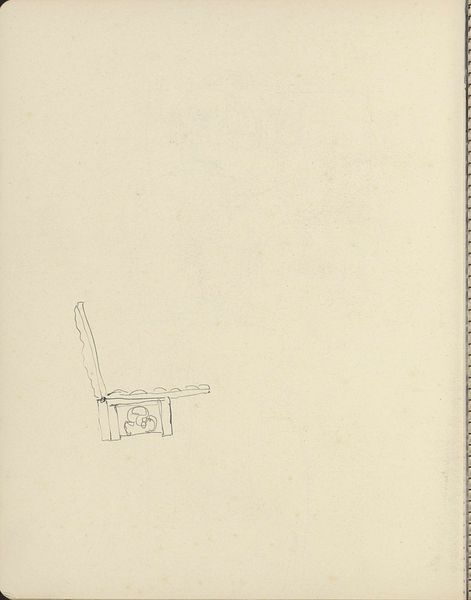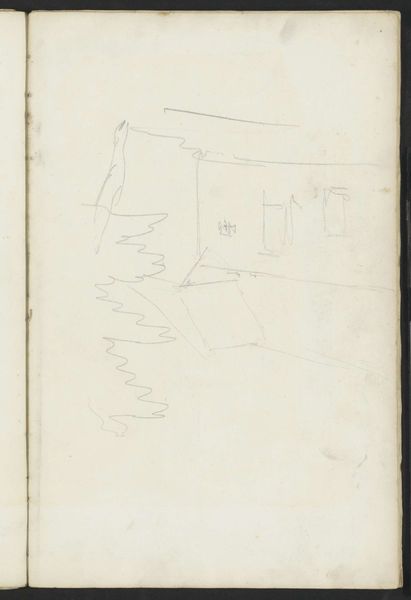
drawing, pencil
#
drawing
#
pen sketch
#
incomplete sketchy
#
hand drawn type
#
landscape
#
personal sketchbook
#
idea generation sketch
#
ink drawing experimentation
#
pen-ink sketch
#
pencil
#
abstraction
#
sketchbook drawing
#
sketchbook art
#
initial sketch
Copyright: Rijks Museum: Open Domain
Curator: So, here we have “Figuren in een landschap”, or "Figures in a Landscape", a sketch attributed to Isaac Israels, created sometime between 1875 and 1934, part of the Rijksmuseum collection. Editor: It feels very ephemeral, almost like a fleeting thought captured on paper. The loose lines suggest figures and a landscape, but it's more about suggestion than explicit representation. What strikes me is the emptiness, a lack of material grounding. Curator: Right, it's very much an initial sketch, an exploratory piece. We see Israels working through ideas. Given that he was very interested in portraying working-class life, this piece may reveal aspects about his drawing process itself. What types of paper did he use? What was the availability of pencils or ink like at this time? The nature of his sketches may very well offer a look into his approach. Editor: Exactly. How was a piece like this originally intended to be seen? Was it destined for public consumption, or was it a private exercise, a preliminary exploration before a larger, more finished piece? Did Israels use drawings such as these in a teaching environment? And that impacts how we read it today in a museum context. Curator: And what are the economic and social ramifications of that? Here you see a man sketching in what is suggested to be a rural setting. You almost never find his works without figures depicted as such; how would it influence Israels himself to capture society in that period? Editor: Absolutely, it's interesting to think about its value now, both monetarily and culturally, as a piece housed in a major institution like the Rijksmuseum. What decisions were made in adding this to the museum’s collection? I suspect these more utilitarian sketches weren't always valued alongside paintings and other "fine art". Curator: A compelling observation. Seeing a work like this gives a look into art production from over a century ago. Editor: It really challenges our ideas of what art can be and who decides its value, which is something I love about encountering sketches like these.
Comments
No comments
Be the first to comment and join the conversation on the ultimate creative platform.
